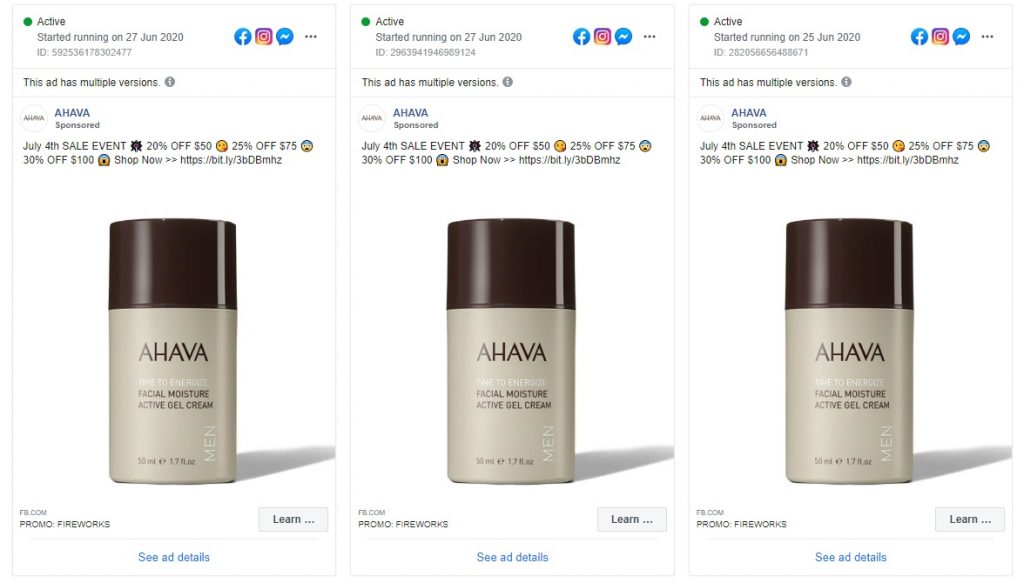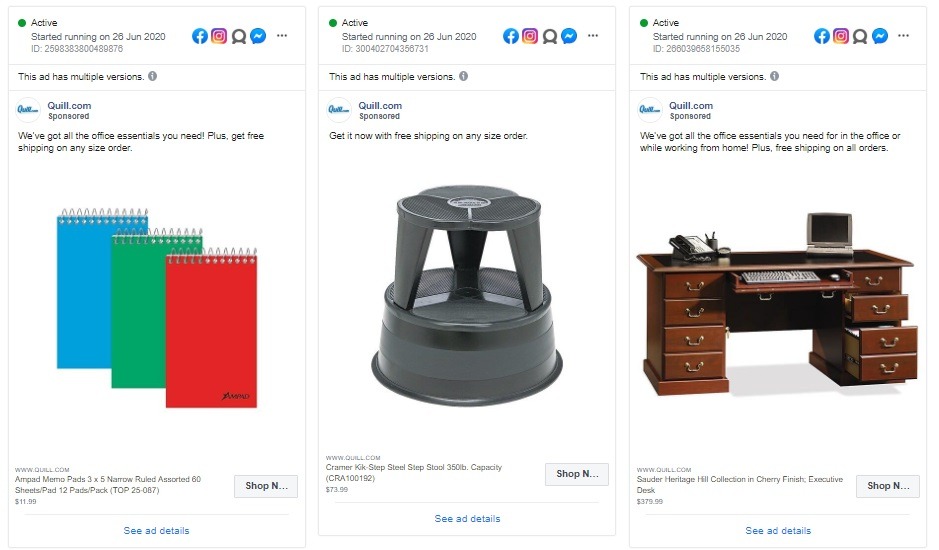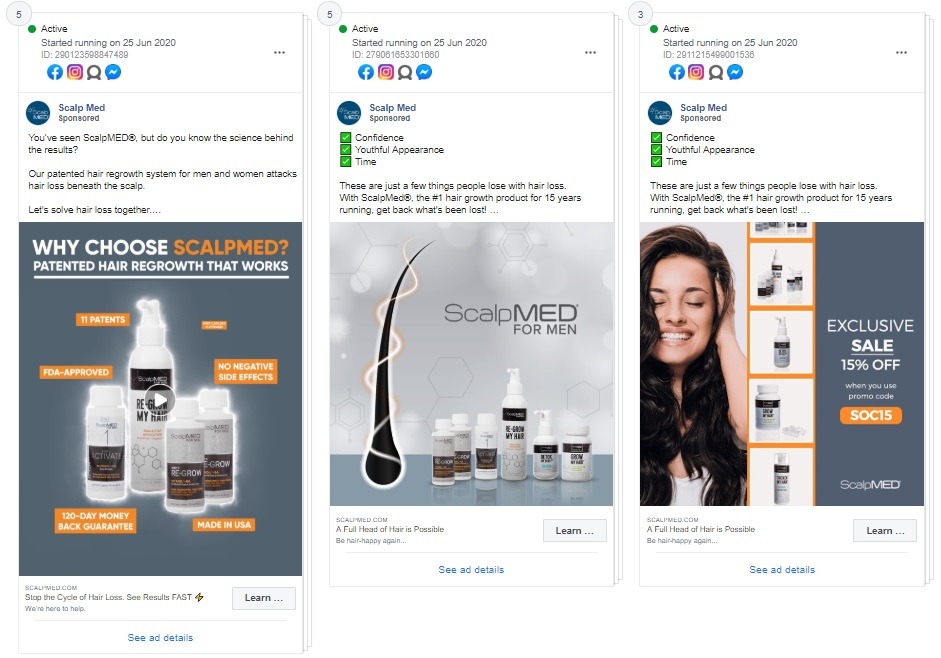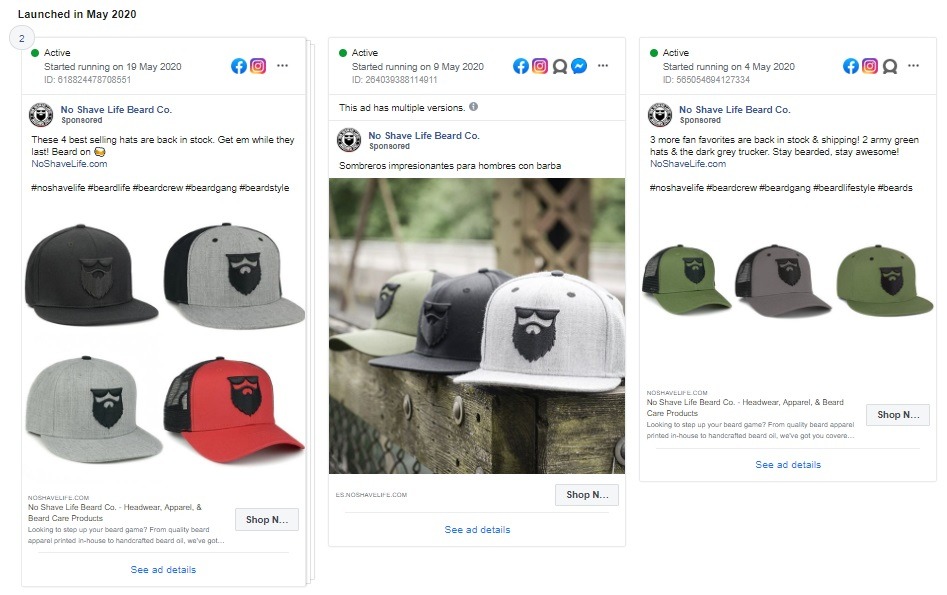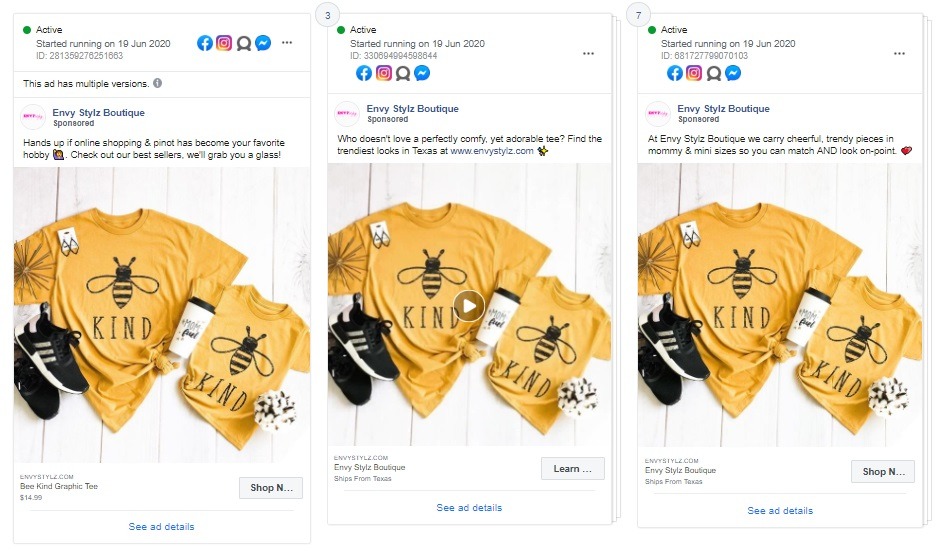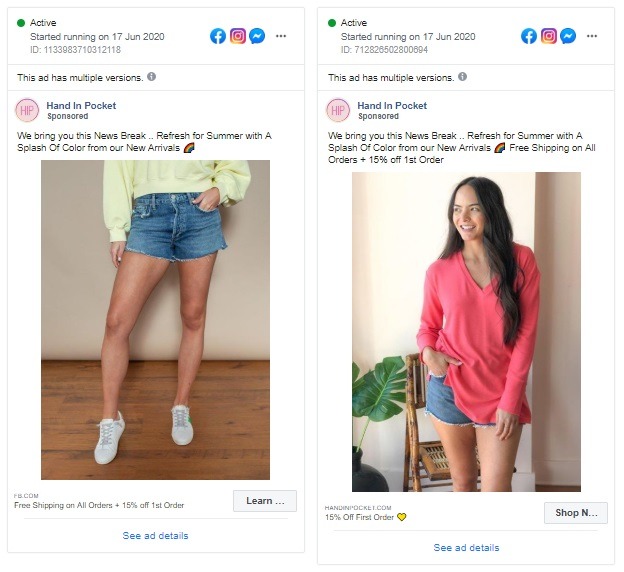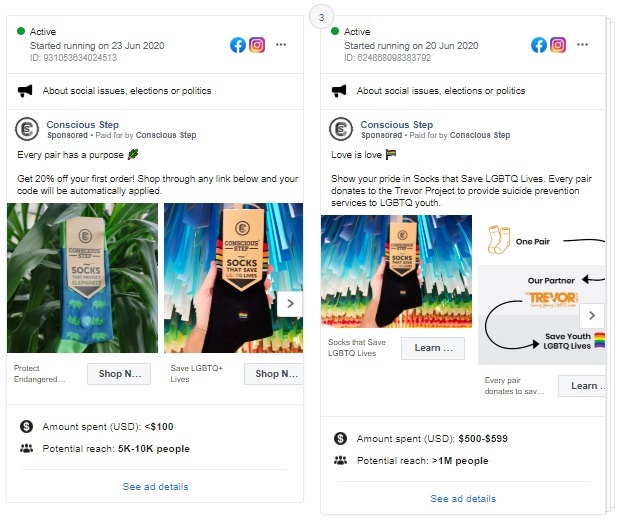Want to increase your ad engagement? Then it’s time to test using emojis in Facebook ads. This is something our PPC managers have been experimenting with for some time. In fact, we have found that ad conversion rates increase by as much as 50% with the use of the right emojis!
Emojis offer a non-verbal way of getting messages across to potential shoppers. They are not only playful but can save you on limited headline characters, add emotion to your post, and represent a universal language that everyone gets.
[Image Source: Ahava]
But here’s the catch: yes, using emojis in Facebook ads can be very effective in driving CTRs. However, they need to be used strategically and be in line with your target audience and brand.
In this post, we will take you through the eight most important dos and don’ts of using emojis in your Facebook ads.
1. Don’t Use Facebook Ad Emojis if They Don’t Make Sense for Your Brand
Emojis may work for a lot of eCommerce brands, but that doesn’t mean they will for yours. If emojis don’t suit your brand voice and tone, you run a big risk of ads offending your target audience or creating conflicting brand messaging. Let’s say you have a B2B eCommerce brand selling products to law firms; adding a shocked or winky emoji to your headline copy would not only be off-brand, but seem very out of place with the tone of the headline and text you would be using.
[Image Source: Quill]
Before using emojis in your Facebook ads, you should consider your brand voice, target audience, and the niche you’re selling in. If your brand is fun and quirky, selling in a fun niche, or appeals to an audience that is less professional, then go for it. But if your brand is the opposite, you will want to hold off!
2. Do Use Facebook Ad Emojis if They Make Sense for Your Product
So your brand voice and market have room for some emoji Facebook ad fun; but what about your products? Just because your brand uses emojis, doesn’t mean you need to be using them all the time – and when you do, they should make sense for the product you’re selling. Take a look at the below ads from ScalpMED.
As you can see from their three latest ads, they don’t use emojis in every ad (matching the headline post to the messaging – but more on that later); and when they do, it makes sense for the product. In this case, simple ticks help list the benefits of their product in a user-friendly, engaging way.
3. Don’t Use Facebook Ad Emojis if They Don’t Make Sense for Your Message
As we touched on briefly above, you need to make sure that you only use emojis in your Facebook ads when it makes sense for your ad messaging. Take the below example from one of our merchants, No Shave Life Beard Co. A simple beer emoji, strategically placed, gives the feeling of celebration in their announcement of back-in-stock items.
4. Do Split Test Using Emojis in Ads Before Committing Your Full Budget
Even if emojis make sense, in theory, with your brand, messaging, audience, and product, this doesn’t mean you should go emoji-mad without doing the test work. This is why it’s important to A/B test your Facebook ad – with and without an emoji – before you throw your whole ad budget at it. This means using Facebook’s split testing with the two versions, to test performance with one target audience. Also, remember: you will need to test emojis for different segments – what works for one age group, for example, may not work for another!
If you’re new to Facebook’s A/B testing feature, you can follow this step-by-step guide from Facebook Business.
5. Do Use Emojis that Enhance the Right Emotion
As we know, emojis are a visual form of communication that elicits emotion – and they may be small, but they say a lot! Therefore, by using the wrong emoji in your Facebook ad, you will more than likely mess up your messaging.
Let’s take a look at the eCommerce Facebook ad examples above, from Envy Stylz. As you can see, they have used different headline messaging and emojis to elicit different emotions. You will also notice that they haven’t emoji-stuffed their ad texts – which brings us to the next point on our list of dos and don’ts of using emojis in Facebook ads.
6. Don’t Go Emoji Crazy
Another brand that proves that more often than not, less is more when it comes to emojis, is Hand in Pocket.
When it comes to using emojis in Facebook ads, the last thing you want to do is smother your headline with too many emojis. Why? Because it will distort the messaging, comes off as annoying and spammy, and could diminish your brand impression.
7. Do Use Emojis to Show Off Your Human Side
Strategically using emojis in your Facebook ads can help make your eCommerce brand more human. They are fun, relatable, friendly, and used authentically on social media by your audience. This can also help you ‘camouflage’ your ad in your potential shoppers’ newsfeed, by making it look more like a friendly post than a sponsored ad. A brand that understands how a simple emoji can enhance its message and be relatable is Conscious Step.
8. Don’t Use the Wrong Emojis
Lastly, but still vitally important when deciding whether to use emojis, is considering which emojis to use and which not to. An emoji with the wrong tone or connotation can do a lot of damage. Unless, of course, it suits the specific situation. As we mentioned, you will want to test emojis against your niche, market, and branding before picking emojis for your ads. In fact, according to our data, the right emoji can increase your Facebook ad conversions by as much as 50%.
To jump-start your journey to using the right emojis, you can go to Emojipedia. Plus, here are the top three emojis that we’ve found can increase conversions (no, not engagement – conversions!) of Facebook Ads.
The Bottom Line
When it comes to using emojis in Facebook ads, it’s important to make sure they follow the golden rules of marketing: be relevant, clear, and creative. You also want to keep it strategic and test them for your specific niche, audience, and brand before you go crazy.
Have questions? Post them in the comments below!

Nicole is a content writer with over sixteen years experience and flair for storytelling. She runs on a healthy dose of caffeine and enthusiasm. When she's not researching the next content trend or creating business content strategies, she's an avid beachgoer, coffee shop junkie and hangs out on LinkedIn.
Recommended articles
 Facebook Ads for eCommerce: 16 Strategies, Examples & Tips
Facebook Ads for eCommerce: 16 Strategies, Examples & Tips
 How to Build a Winning eCommerce Ads Strategy
How to Build a Winning eCommerce Ads Strategy
 Google Ads for eCommerce: Everything You Need to Know
Google Ads for eCommerce: Everything You Need to Know
 10X Your Traffic with PPC Management Software
10X Your Traffic with PPC Management Software
Comments
Powered by Facebook Comments

